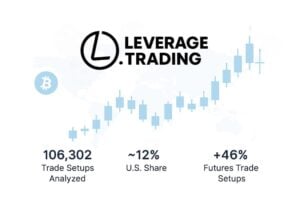The global financial landscape is once again in flux, and the ripple effects are keenly felt across all asset classes, including digital currencies. As of October 2025, a confluence of significant macroeconomic developments—plummeting oil prices, a weakening U.S. dollar, and a discernible shift towards accommodative monetary policy from the Bank of Japan—is prompting a reassessment of investment strategies worldwide. For Bitcoin, the original cryptocurrency, these movements are not just market noise; they represent critical inflection points that could fundamentally reshape its trajectory as both a store of value and a speculative asset in the coming months.
Global Economic Crosscurrents
The past year has seen a notable decline in crude oil prices, a trend driven by a combination of increased global supply, particularly from non-OPEC+ nations, and a cooling in demand stemming from persistent, albeit moderating, inflation and slower economic growth in major economies. This decline has broad implications, easing inflationary pressures that central banks have battled for years. Simultaneously, the U.S. Dollar Index (DXY) has been on a downward trajectory, reflecting expectations of a more dovish stance from the Federal Reserve following successful inflation containment, alongside improving economic prospects in other developed nations. A weaker dollar typically makes dollar-denominated assets, including Bitcoin, more attractive to international buyers.
- Lower oil prices can reduce operational costs for businesses and boost consumer purchasing power, potentially stimulating economic activity.
- A cooling U.S. dollar often signals global capital reallocation, as investors seek returns outside of traditional dollar-denominated safe havens.
- These shifts could alleviate pressure on emerging markets, making them more resilient to global economic shocks.
Bank of Japan’s Pivotal Move
Adding another layer of complexity is the Bank of Japan’s (BoJ) recent signaling of a potential rate cut. For decades, the BoJ has maintained an ultra-loose monetary policy, including negative interest rates and yield curve control, to combat deflation. The mere suggestion of a further cut, or even a more prolonged dovish stance, has significant implications for global liquidity and currency markets. Such a move could exacerbate the ‘carry trade’ dynamics, where investors borrow in low-interest rate currencies like the Yen to invest in higher-yielding assets elsewhere. Should this capital flow increase, risk assets globally, including Bitcoin, could stand to benefit from the increased liquidity.
- A rate cut by the BoJ would further widen the interest rate differential between Japan and other major economies, encouraging capital outflow.
- Increased global liquidity often flows into alternative assets, especially those perceived to offer higher growth potential or inflation hedges.
- The BoJ’s policy pivot underscores a global trend towards cautious monetary easing, even as other central banks remain vigilant.
Bitcoin as a Macro Hedge
In this evolving macroeconomic climate, Bitcoin’s role as a potential hedge or an alternative store of value becomes increasingly relevant. As fiat currencies face inflationary pressures (even if moderated by lower oil) and central banks signal continued easing, Bitcoin’s fixed supply and decentralized nature appeal to investors looking to diversify away from traditional financial instruments. Its growing institutional acceptance and infrastructure make it a more viable option than ever before. A weaker dollar, in particular, has historically shown a loose inverse correlation with Bitcoin’s price, suggesting that international investors might view BTC ($106,787.00) as a more stable alternative when the world’s reserve currency falters.
- Bitcoin’s digital scarcity model (21 million coin cap) positions it as an attractive alternative to fiat currencies undergoing devaluation.
- Institutional adoption via ETFs and direct investments continues to bolster its credibility as a legitimate asset class.
- Its increasing liquidity and accessibility make it easier for large capital to flow in during times of traditional market uncertainty.
Potential Scenarios for Bitcoin
The convergence of these macro factors presents a mixed, but largely optimistic, outlook for Bitcoin. On one hand, the easing of global financial conditions, epitomized by lower oil prices, a softer dollar, and the BoJ’s dovish signals, creates an environment ripe for capital to flow into riskier, high-growth assets. This could propel Bitcoin towards new all-time highs, particularly as institutional investors seek uncorrelated returns. On the other hand, the underlying reasons for some of these shifts, such as cooling global demand, could point to broader economic weakness that might still drag down all asset classes, including crypto.
- Bullish Scenario: Sustained capital inflow from institutional and retail investors seeking alternatives to depreciating fiat, driving Bitcoin’s price significantly higher.
- Neutral Scenario: Bitcoin maintains its current trajectory, reacting to specific crypto-native catalysts rather than solely macro factors, as broader economic uncertainty creates a push-pull effect.
- Bearish Scenario: A more severe global economic downturn than anticipated overrides the benefits of easing monetary policy, leading to a general de-risking across all asset classes, including Bitcoin.
Conclusion
The unfolding macroeconomic narrative, characterized by declining oil prices, a weakening U.S. dollar, and the Bank of Japan’s inclination towards further monetary easing, paints a compelling backdrop for Bitcoin. While the path ahead is rarely linear, these powerful global currents generally favor assets with disinflationary properties and those positioned as alternatives to traditional finance. Investors and analysts will be closely monitoring how Bitcoin navigates these complex dynamics, cementing its role—or perhaps revealing its limitations—as a critical component of the global financial ecosystem in late 2025 and beyond.
The post Global Macroeconomic Headwinds: How Falling Oil, Cooling Dollar, and BoJ Rate Cuts Shape Bitcoin’s Future appeared first on FXcrypto News.
















 24h Most Popular
24h Most Popular





 Utilities
Utilities